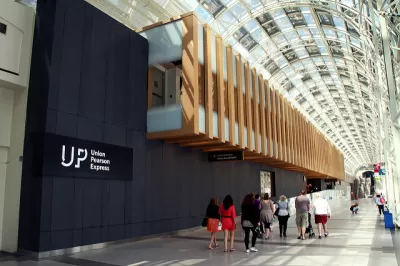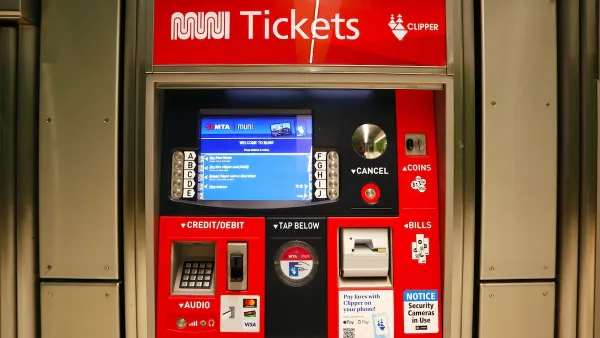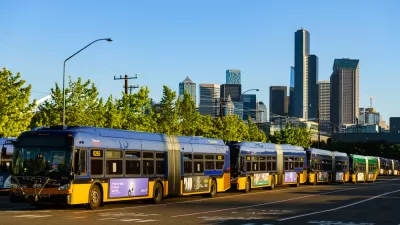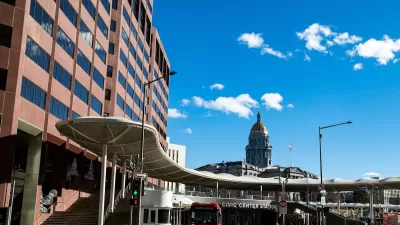Faced with the underwhelming performance of the newly opened UP Express, Toronto transit officials did something drastic: they slashed the cost of a ride.

Sean Marshall reports on lessons learned from the ongoing evolution of the Union Pearson Express (UP Express), Toronto's16-month-old rail connection between Pearson International Airport and Union Station in downtown Toronto.
For the first year of its operation, the UP Express operated well below its ridership targets. "In June 2015, UP Express had an average daily ridership of 2,858; in July, the average daily ridership was 2,383," according to Marshall. "Metrolinx expected that daily ridership would grow to 5,000 within a year."
Earlier this spring, just under a year before the line's first birthday, Metrolinx took decisive action and reduced the one-way cash fare "from $27.50 to $12, and from $19 to $9 with a Presto card, and fares between Union and Bloor and Weston stations were reduced to match the GO Transit fares for the same trips." Previously "the one-way fare between Union Station and Pearson airport was set at $27.50, or $19.00 with a Presto card. Discounts and special fares were available for families, airport workers, and same-day return trips," explains Marshall.
The results, in terms of ridership, have been unequivocally positive. "Since the new fare structure was introduced, UP Express ridership has more than tripled. By June 2016, the daily average ridership increased to 7,657, or 49 passengers per train."
FULL STORY: Ridership Has Tripled on Toronto’s Union Pearson Express

Planetizen Federal Action Tracker
A weekly monitor of how Trump’s orders and actions are impacting planners and planning in America.

The Simple Legislative Tool Transforming Vacant Downtowns
In California, Michigan and Georgia, an easy win is bringing dollars — and delight — back to city centers.

San Francisco's School District Spent $105M To Build Affordable Housing for Teachers — And That's Just the Beginning
SFUSD joins a growing list of school districts using their land holdings to address housing affordability challenges faced by their own employees.

In More Metros Than You’d Think, Suburbs are Now More Expensive Than the City
If you're moving to the burbs to save on square footage, data shows you should think again.

The States Losing Rural Delivery Rooms at an Alarming Pace
In some states, as few as 9% of rural hospitals still deliver babies. As a result, rising pre-term births, no adequate pre-term care and "harrowing" close calls are a growing reality.

The Small South Asian Republic Going all in on EVs
Thanks to one simple policy change less than five years ago, 65% of new cars in this Himalayan country are now electric.
Urban Design for Planners 1: Software Tools
This six-course series explores essential urban design concepts using open source software and equips planners with the tools they need to participate fully in the urban design process.
Planning for Universal Design
Learn the tools for implementing Universal Design in planning regulations.
Smith Gee Studio
City of Charlotte
City of Camden Redevelopment Agency
City of Astoria
Transportation Research & Education Center (TREC) at Portland State University
US High Speed Rail Association
City of Camden Redevelopment Agency
Municipality of Princeton (NJ)





























